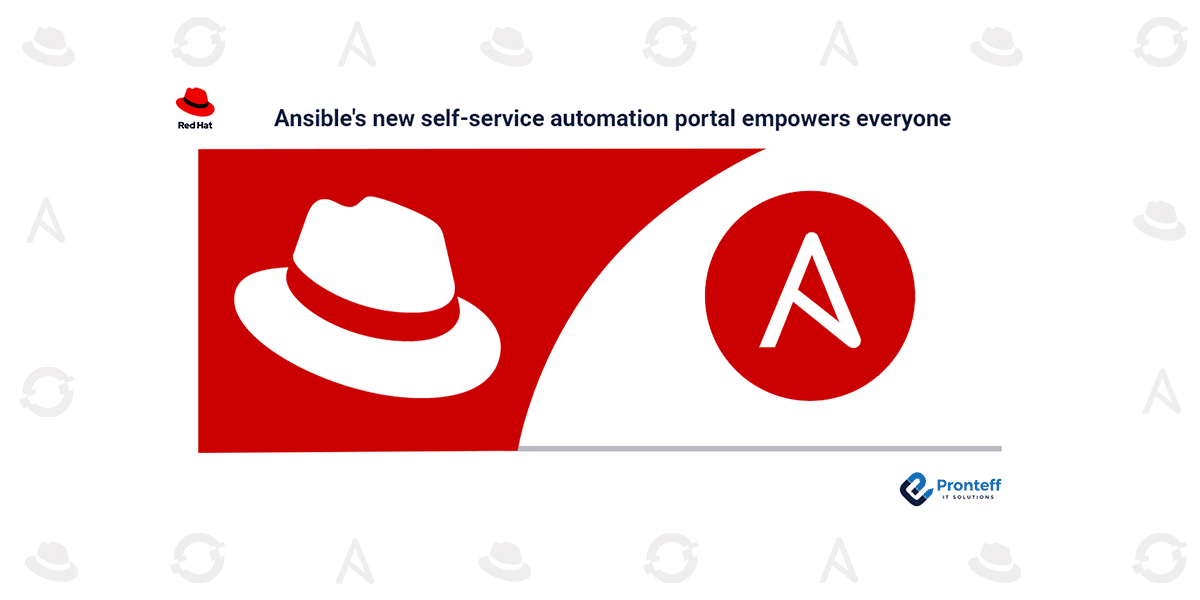Ansible’s new self-service automation portal empowers everyone
In this blog, we will learn how Ansible’s new self-service automation portal empowers everyone.
Automation delivers tremendous value with Red Hat Ansible Automation Platform, but achieving adoption across an entire organization isn’t always straightforward. While the core automation team builds and manages automation content, the true power of the platform is realized only when a wider set of IT professionals—many of whom may not be Ansible experts—start using automation in their day-to-day work. These users bring important operational knowledge and real-world use cases, but they shouldn’t be expected to navigate the complexities of writing and managing automation themselves.
For Ansible Automation Platform to deliver its full impact, automation must extend beyond administrators and developers and reach teams throughout the business.
With the introduction of the self-service automation portal in Ansible Automation Platform 2.6, expanding automation across the organization becomes significantly easier.
Empowering subject matter experts
Network engineers and other domain specialists who don’t work with Ansible Playbooks or workflows often encounter a few barriers:
- Onboarding challenges: Learning the platform from scratch can require considerable time and training.
- Ticket overload: Automation teams frequently receive tickets from users who simply need to run existing automation—not build new content.
- Limited adoption: When automation is restricted to a small group of experts, the organization misses out on the broader benefits.
Introducing the self-service automation portal
The self-service automation portal is designed specifically to remove these barriers. It provides a simplified experience that allows subject matter experts to run automation safely and effectively—without needing technical knowledge of Ansible.
Key capabilities include:
1. A streamlined, user-friendly interface
The portal focuses only on what end users need: the ability to launch approved automation. They don’t need visibility into the underlying Playbooks, inventory structures, or workflow logic.
2. Built-in authentication and alignment with existing identities
It uses the same authentication framework as Ansible Automation Platform, meaning users can log in with their existing credentials. Teams and organizational roles are automatically synchronized for seamless access.
3. Role-based, curated experiences
Administrators configure automation, define RBAC, and determine which users or teams can access specific workflows. The portal then presents each user with a guided, permission-aware view tailored to their responsibilities.
4. Rich, customizable forms for end users
Users can create or import enhanced form-based interfaces that support dynamic logic, real-time validation, conditional inputs, and dropdown selections tied to platform resources such as inventories. This makes launching automation more intuitive and controlled.
By simplifying how users interact with automation, the portal expands adoption and ensures automation becomes part of daily operations across teams.
Why this approach matters
Organizations often attempt to widen automation usage by integrating external tools or developing custom portals. However, these approaches can become complex, expensive, and difficult to maintain. The self-service automation portal delivers this capability natively within the Ansible Automation Platform ecosystem—without the need for additional systems or custom development.
It enables automation teams to focus on building value while empowering SMEs to run automation safely and consistently whenever they need it.
The result is:
- Greater standardization
- Stronger governance
- Increased autonomy for teams
- More efficient use of automation across the business
Conclusion
Improving accessibility is the key to unlocking the full potential of automation. The self-service automation portal in Ansible Automation Platform 2.6 provides that gateway—helping organizations scale automation, boost productivity, and streamline operations.
You can experience these capabilities firsthand through the interactive demonstration.









